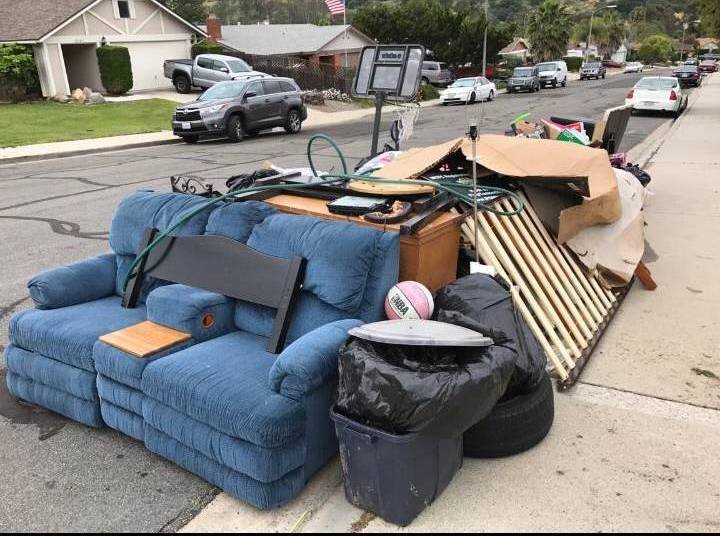Device Removal Atlanta: Quick and Safe Disposal Services
Wiki Article
Specialist Waste Management Approaches Customized for Industrial Setup
Tailoring waste management strategies to suit the unique needs of industrial setups is not just advantageous yet crucial for preserving functional efficiency and environmental sustainability. The mission for better waste monitoring in commercial settings entails a thorough approach that stabilizes regulative compliance, cost-effectiveness, and environmental obligation.Significance of Tailored Waste Monitoring
Customized waste administration practices are essential in industrial settings to maximize resource usage and decrease environmental effect. Industrial operations create a significant amount of waste, varying from strong by-products to chemical contaminants, positioning a risk to the setting if not handled successfully (Appliance removal Atlanta). By tailoring waste management methods to suit the details requirements and obstacles of each commercial center, companies can not just adhere to policies yet also improve functional effectiveness and sustainabilityOne trick aspect of tailored waste management is performing an extensive waste assessment to identify the types and quantities of waste produced. This assessment permits firms to carry out targeted services such as recycling programs, waste partition protocols, and waste-to-energy initiatives. By recognizing the make-up of their waste streams, industrial facilities can create cost-effective techniques to decrease waste generation at the source, resulting in long-lasting environmental advantages.

Sorts Of Industrial Waste
What are the various groups of hazardous waste generally produced in producing processes? Industrial waste can be identified into several major groups based upon its structure and qualities. Harmful waste is just one of one of the most essential types, including chemicals, solvents, hefty metals, and other products that present a threat to human health and wellness or the environment. This category often requires special delivery and disposal techniques to avoid contamination and make certain safety and security.One more common sort of industrial waste is non-hazardous waste, which encompasses materials like paper, plastics, and product packaging waste. While non-hazardous waste may not pose prompt risks, appropriate administration is still essential to reduce landfill usage and advertise recycling and sustainability methods.

Contaminated Materials Handling Procedures
Effective management of harmful waste in industrial settings demands strict adherence to developed rocket junk removal managing procedures to minimize threats and guarantee environmental safety and security. Unsafe waste handling treatments involve a number of key steps to reduce the possible influence on human health and wellness and the setting.Secondly, once identified, contaminated materials should be meticulously segregated from non-hazardous waste to avoid contamination and make certain appropriate therapy. Storage of contaminated materials should abide with laws concerning control, labeling, and compatibility to avoid leakages, spills, or other cases that could endanger workers or the environment.
Furthermore, managing procedures should consist of making use of individual protective tools, staff member training, and emergency situation reaction protocols. Normal assessments, tracking, and documentation of harmful waste handling activities are critical to keeping conformity and identifying areas for improvement. By adhering to these structured treatments carefully, commercial centers can successfully take care of harmful waste and copyright their commitment to ecological stewardship.
Carrying Out Effective Recycling Practices

To implement efficient reusing practices, commercial centers must first carry out a waste audit to determine the kinds and amounts of recyclable materials generated in their operations. Based upon clean and green junk removal this audit, firms can then develop designated reusing terminals, give ideal training to employees on appropriate sorting methods, and team up with trusted recycling partners for the collection and handling of materials. Additionally, setting particular reusing objectives, tracking progress, and regularly interacting with team about the value of reusing are essential actions to make sure the success and sustainability of recycling efforts in commercial settings.
Monitoring and Constant Renovation
To make sure the effectiveness and sustainability of waste monitoring strategies in industrial settings, the application of robust tracking and continual renovation procedures is critical. Monitoring involves tracking crucial performance signs (KPIs) such as waste generation prices, reusing portions, green junk removal and hauling services and disposal expenses. On a regular basis assessing these metrics allows organizations to identify areas for improvement and gauge the success of carried out waste management campaigns.Continual renovation is crucial for fine-tuning procedures gradually. It involves evaluating checking information, identifying inefficiencies, and implementing adjustments to maximize waste administration techniques better. This repetitive approach promotes a culture of recurring improvement and innovation within the company.
Making use of technology like waste tracking software program and IoT sensors can improve monitoring efforts, giving real-time data for informed decision-making. Employee training and engagement also play a crucial function in making sure the success of monitoring and continual improvement initiatives, as frontline personnel are frequently principals in waste administration procedures.
Conclusion
Finally, customized waste administration strategies are important for industrial setups to effectively handle various types of waste, including harmful materials. By carrying out effective reusing practices and continuously surveillance and enhancing waste administration procedures, industries can minimize their environmental influence and make certain conformity with laws. It is crucial for firms to focus on waste administration to secure the setting and advertise sustainability in their procedures.Report this wiki page